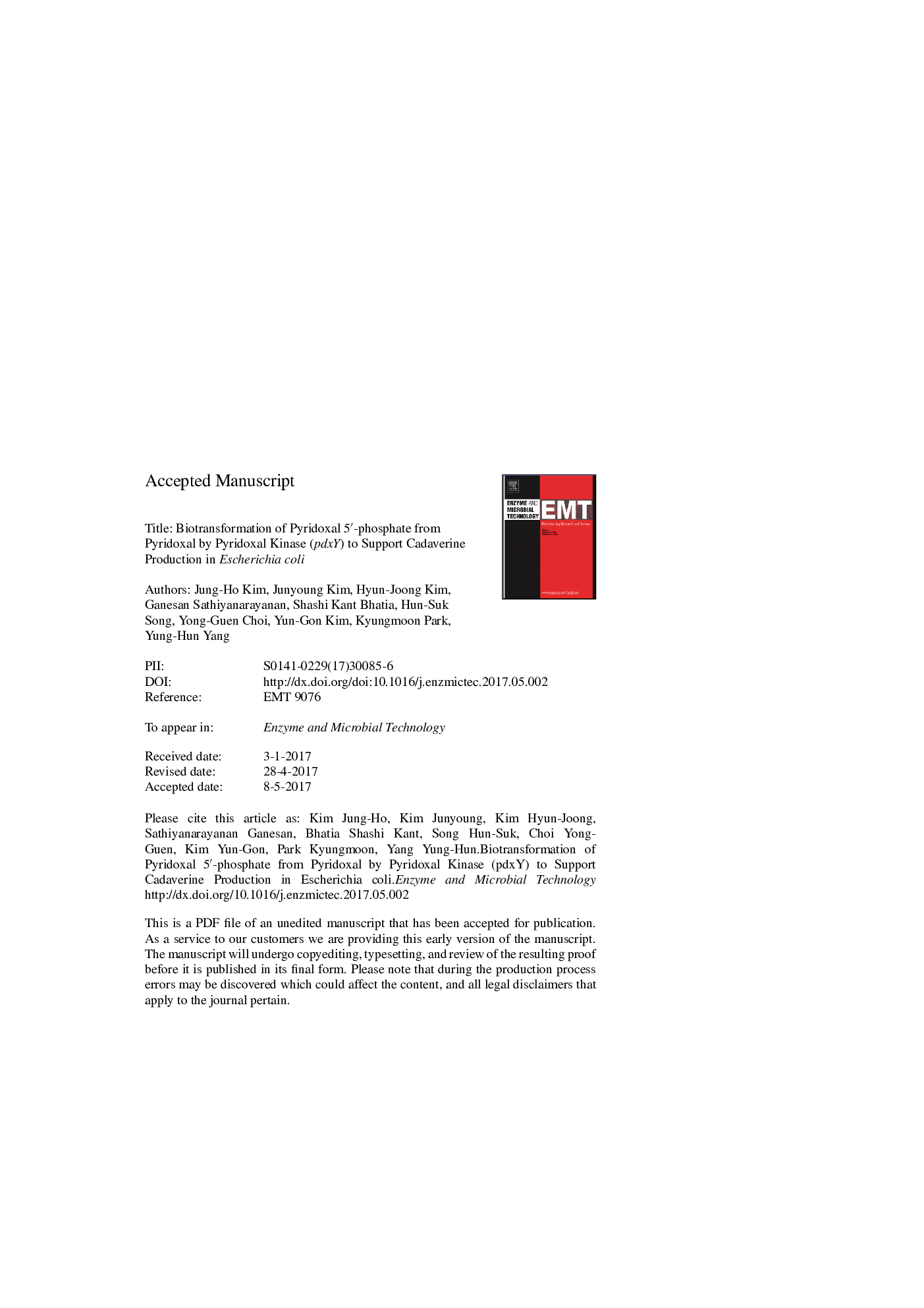| Article ID | Journal | Published Year | Pages | File Type |
|---|---|---|---|---|
| 4752700 | Enzyme and Microbial Technology | 2017 | 27 Pages |
Abstract
Cadaverine, a five-carbon diamine (1,5-diaminopentane), can be made by fermentation or direct bioconversion and plays an important role as a building block of polyamides. Lysine decarboxylase (CadA) transforms L-lysine to cadaverine and pyridoxal 5â²-phosphate (PLP) can increases conversion rate and yield as a cofactor. Biotransformation of cadaverine using whole Escherichia coli cells that overexpress the lysine decarboxylase has many merits, such as the rapid conversion of l-lysine to cadaverine, possible application of high concentration reactions up to the molar level, production of less byproduct and potential reuse of the enzyme by immobilization. However, the supply of PLP, which is a cofactor of lysine decarboxylase, is the major bottleneck in this system. Therefore, we initiated our study on PLP precursors and PLP-related enzymes and discovered that pyridoxal (PL) can be a viable alternative to supply PLP. Among various PLP systems examined, pyridoxal kinase (PdxY) showed the highest conversion of PL to PLP, resulting in more than 60% conversion of l-lysine to cadaverine with lysine decarboxylase. When the reaction with 0.4Â M l-lysine, 0.2Â mM PL and more whole cells was performed, it resulted in an 80% conversion yield. Furthermore, when barium-alginate immobilization was applied, it showed a 90% conversion yield in 1Â h with PL, suggesting that it is compatible with developed whole-cell systems without a direct supply of exogenous PLP.
Related Topics
Physical Sciences and Engineering
Chemical Engineering
Bioengineering
Authors
Jung-Ho Kim, Junyoung Kim, Hyun-Joong Kim, Ganesan Sathiyanarayanan, Shashi Kant Bhatia, Hun-Suk Song, Yong-Keun Choi, Yun-Gon Kim, Kyungmoon Park, Yung-Hun Yang,
